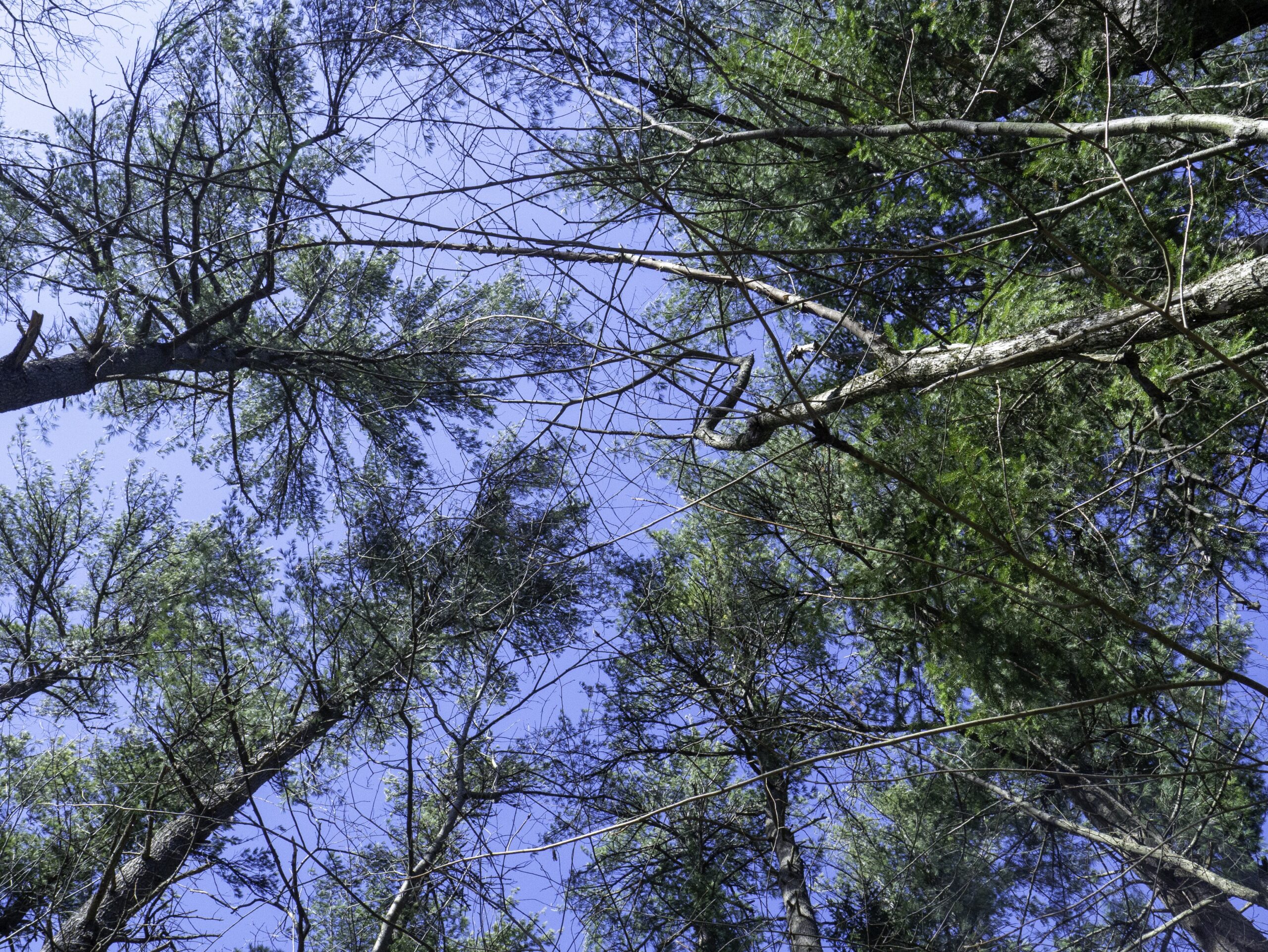Bowdoin Pines forest management plan set to remove invasive species to protect indigenous trees
April 18, 2025
 Isa Cruz
Isa CruzStarting late this spring and continuing through the summer, the Bowdoin Pines, a small pine forest located on either side of Bath Road, will undergo upkeep and cultivation as part of the College’s new forest management project to preserve the indigenous eastern white pines.
The seeds of the project were sown in 2021 with the creation of an internal working group in response to the large number of fallen trees in the Pines after storms in 2020 and 2021. These trees, many of which were older, were causing damage to the surrounding area.
Since its creation, the working group has consisted of a variety of faculty, staff, consultants and a rotation of students. The College worked with both Maine Woodland Owners and Two Trees Forestry to help guide the decision-making process and evaluate what needs to be done with the Pines to preserve the health of the trees and surrounding area.
“There [are] trees of … pretty extensive age in that area,” Campus Space Planner Tony Sprague said. “There had been a couple of winters and springs where some pretty severe storms caused damage in the Pines. It really helped to galvanize that this was an area of campus that needed to be looked at more closely to figure out what the right approach was … for the health of that forest moving forward.”
The Pines includes many older trees and invasive species that inhibit the growth of new eastern white pines. Through their evaluations, the working group ultimately decided on a mixed approach: Some areas of the Pines will be left untouched and other portions actively managed through a variety of conservation techniques focused on removing invasive species and fostering healthy pine growth.
Sprague detailed the different approaches the group could have taken and their ultimate decision.
“It could have been anything from ‘Okay, we’re not going to do anything, and we’ll just let the … forest develop as it develops and address the trees when or if there becomes a problem.’ [Or] you could also do something … more dramatic, a more active forest management plan,” Sprague said. “Then there’s a kind of approach that’s more in the middle, and that’s ultimately where the group went.”
The plan splits the 30 acres of the Bowdoin Pines into three parts: the Whittier Field Corridor, the Bath Road Corridor and the Forest Succession and Biodiversity Zone. Both the Whittier Field and Bath Road Corridors will undergo maintenance, including the cutting of trees, though the bulk of the cutting will occur in the Whittier Field Corridor. The Forest Succession and Biodiversity Zone, around 13 acres of the total land, will remain untouched. Senior Vice President for Finance and Administration and Treasurer Matt Orlando summarized the group’s approach.
“The idea here is to create a managed area where we’re creating sort of an eastern pine dominant culture for a good section of the pines. And then another section is a reserve where we’re letting sort of a natural forest succession play out…. I think both sides will be interesting for study,” Orlando said.
Most of the active management work will occur this June and July, after the marking of invasive tree species for cutting and the closure of trails. The clean-up and reopening of the trails is expected to occur in late July.
Through this process, the College hopes to preserve the history of the eastern white pines at Bowdoin.
“There’s a long-standing history with the eastern pine and Bowdoin College, and I think it’s something that eventually, everyone recognizes,” Orlando said. “We’re surrounded by these beautiful pine trees, and there’s a connection to Bowdoin in this place through those trees…. We didn’t want to lose that to history.”
Student Maya Khalil ’28 agreed with the College’s mission, emphasizing the importance of the eastern pines both for the surrounding environment and for the students in classes who use the area for research.
“It’s super important to protect old-growth forests like the Pines. Old-growth forests have a mix of tree ages and include decomposing logs that enrich the soil,” Khalil said. “Also, the understory plants are super diverse. I love exploring the area, and my biology class just did a lab there.”

Comments
Before submitting a comment, please review our comment policy. Some key points from the policy: